
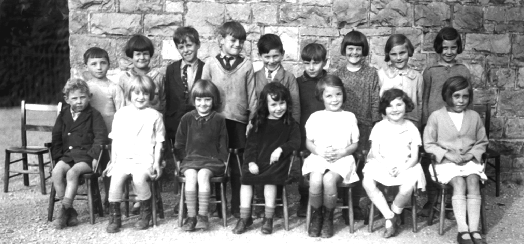
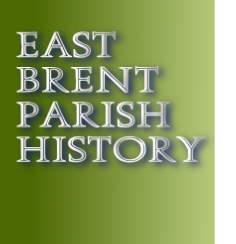
Village trades, shops and businesses
Being an area of mainly pasture land on the edge of the Somerset Levels, the main industry of our area was agriculture, With milk and dairy products being the main source of output.
Our village has always been served by supporting shops, craftsmen and women, who provided the daily needs and alternative employment within our community.
Many of the present day homes in the village were once important and thriving businesses. Ranging from Pubs, grocers, butchers, garages, blacksmiths, carpenters, dressmakers, shoemakers and many many more over the years.
Click for a list of individuals and trades (MS Word). (PDF)
Through the reminiscences of residents who have spent many many years in the village and our researches, we hope to discover and share this important aspect of our social history.
Do please contact us and share with us your knowledge and memories!
Hover your mouse over
‘Places’
to see more pages
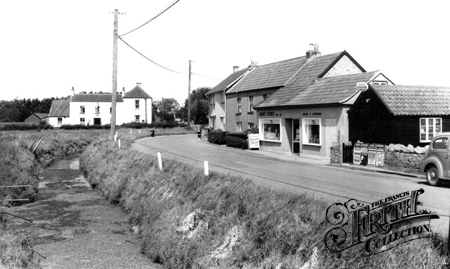
James Stores East Brent circa 1965 © Francis Frith Collection
Here are some reminiscences from Rita Thomas – who was born in the village – of some of the people and places in the village starting in the 1940’s
Taken from the notes of Colin Loader
Rita was able to take us on a tour of East Brent through her mind’s eye of her earlier days.
Rita was able to take us on a tour of East Brent through her mind’s eye of her earlier days.
|
1
|
Rita began her tour at Brent House (Carvery) by remembering when John Barnstable’s mother began serving Cream Teas.
|
|
2
|
Lake House – legend has it that there was a tunnel used by Monks which ran from the house to the Church. (a subject for further investigation maybe?)
|
|
3
|
Picking blackberries in the East Brent/Rooksbridge area. These (or at least the remaining ones) were sent to Robertson’s Jam Factory.
|
|
4
|
James Stores was owned by ‘old Mr. Martin’ who was something of a hermit and very intelligent. Sadly, one day he was found dead. It is possible that Mrs. Martin died by taking tablets? The Stores then was run by Mr. & Mrs. Harris followed by their Son, Emrys. Rita worked in the Paper Shop for 9 years.
|
|
5
|
Rita then ‘took us’ along the Old Bristol Road and remembers, families such as the Hams, Sid Huett (spelling?) who serviced cars at a garage on the A370 and the two Miss Gamlens at The Grange whose brother had Chapel Farm.
|
|
6
|
Houses & cottages in the Strowlands area where Ern Francis, Ham & Phillips families lived. One cottage was hit by a bomb during WW2 which Margery Baker also remembered.
|
|
7
|
Families living in The Mead were the Taylors with their daughter Dorothy - their son was killed in WW2. The Tremletts and Edwards – Mrs. Edwards made puddings for the Harvest Home and never passed on the recipe and Mr. & Mrs. Long who wore a large hat and cleaned the Chapel.
|
|
8
|
The Knoll Inn which was originally 2 houses (pubs) and became one in 1880. The local W.I. used to meet there.
|
|
9
|
Cottages between the Knoll Inn and the Village Hall were lived in by Miss Lloyd, Muss Mur..., Mrs. Jackson and Miss Macey. Mr. Watkins ran the tobacconist shop. The somewhat legendary PC Wilcox lived in the Police House. Children were frightened by him and typical of the time, wore a long cape.
|
|
10
|
Manor Close was built in 1930 probably on land once owned by Manor Farm. Manor Farm was owned by Metford Popham who children were also frightened of. He would come out with a 12-bore shotgun grinding his teeth.
|
|
11
|
Moving across the A370 and along Brent Road is the Methodist Hall which was built on bare land and was opened in 1963 by Mrs. Lang. Once there were stables to one side and a garden. The nearby Stores were owned/ran by the Saturday, Kingdom, Davies, Lee (lived in Manor Close) and Day families. The land opposite was a warehouse for sweets and tobacco. Ern Francis made beautiful wooden toys of garden/farm equipment particularly as gifts at Christmas.
|
|
12
|
Anvil House (now Brent Area Medical Centre) was once a Smithy where Mr. Ward worked in Iron. Mrs. Ward was notable for wearing Victorian dress. Mr. Ward’s son gave money to the Village Hall for improvements where a plaque refers to this. A building existed to the left (facing Anvil House) part of which was a library where Rita recollects changing her books on Tuesday/Thursday.
|
|
13
|
Further down Brent Road is Aston House/Cottage lived Vic Preece (spelling?) who was something of a recluse was well-educated and hoarded bicycle parts. There is then the Cottage Rita knew as ‘Bullseyes’ because of the nature of its windows followed by The Nook now re-named Bemstone.
|
|
14
|
Into Church Street, Rita remembers the slaughterhouse and the Market Garden run by the Hodders on Church land well-fed by natural springs. The Rigs were formerly 2-3 cottages where a Dentist lived in one. Rossholme moved to its location from Weston sea front.
|
|
15
|
On the opposite side of Church Street, Mrs. Ford worked at the school and usually dressed in black. Norbett House was once owned by Sir George White of Bristol Motor Company and in 1910 founded the Bristol Aeroplane Company after seeing Wilbur Wright flying in France in 1909 (another area for research). Blandford House was owned by the Hodders.
|
|
16
|
At the Old Post Office back in Brent Road, Miss Hudson lived downstairs and Mrs. Gibson lived upstairs and at one time sold clothes. The White House definitely was a garage with pumps at the front and farmer R.Hill lived in Ash Trees and delivered milk pouring it into a jug. Marion Hill lived in Wayside.
|
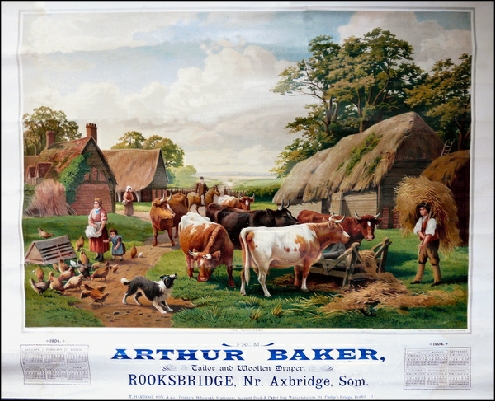
Arthur Baker. Tailor and Draper. Beaconsfield House. Rooksbridge. C: 1883-1919.
1904 Calendar. Courtesy: Andrew Gilling
1904 Calendar. Courtesy: Andrew Gilling
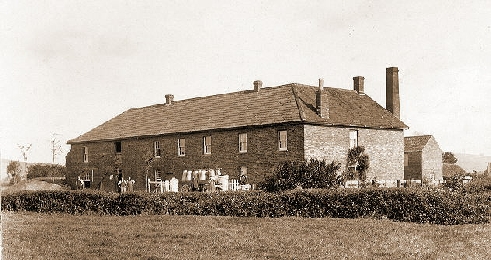
The original Cheddar Valley Dairy at Rooksbridge. C: 1900’s More….
| William's letters home |
| Bessies Poems |
| Edwards Letters Home |
| Cheddar Valley Dairy |
| EBPC Archives |
| Methodist |
| Rooksbridge baptist chapel |
| Shops & Tradesmen |
| Rooksbridge Post Office |
| St Marys |
| Village pump |
| War memorial |
| Wellington Arms |
| Workhouse |
| A day at the dairy |
| vicars |
| WardensAcc |
| deanery mag |
| WW1 Exhibit |
| Workhouse Life |
| War Memorial |
| Cheddar valley Dairy |